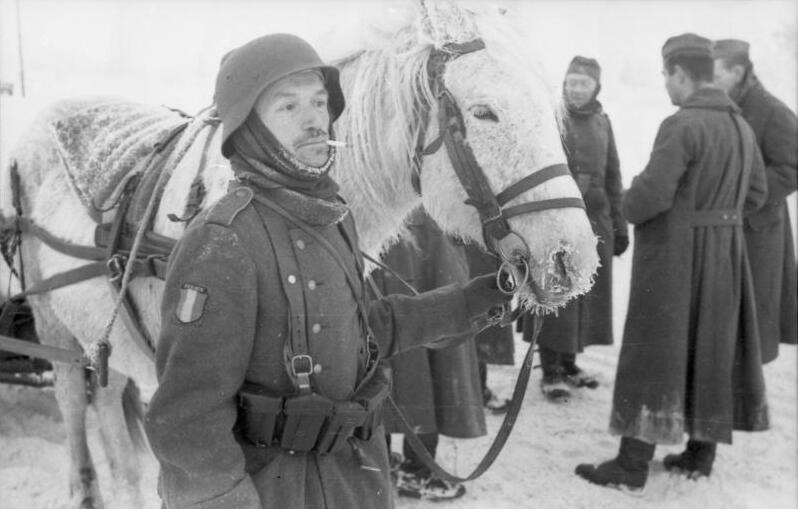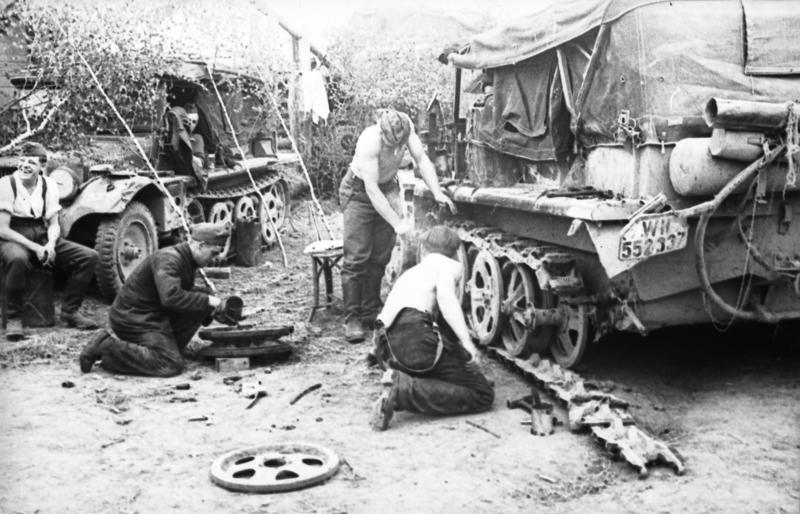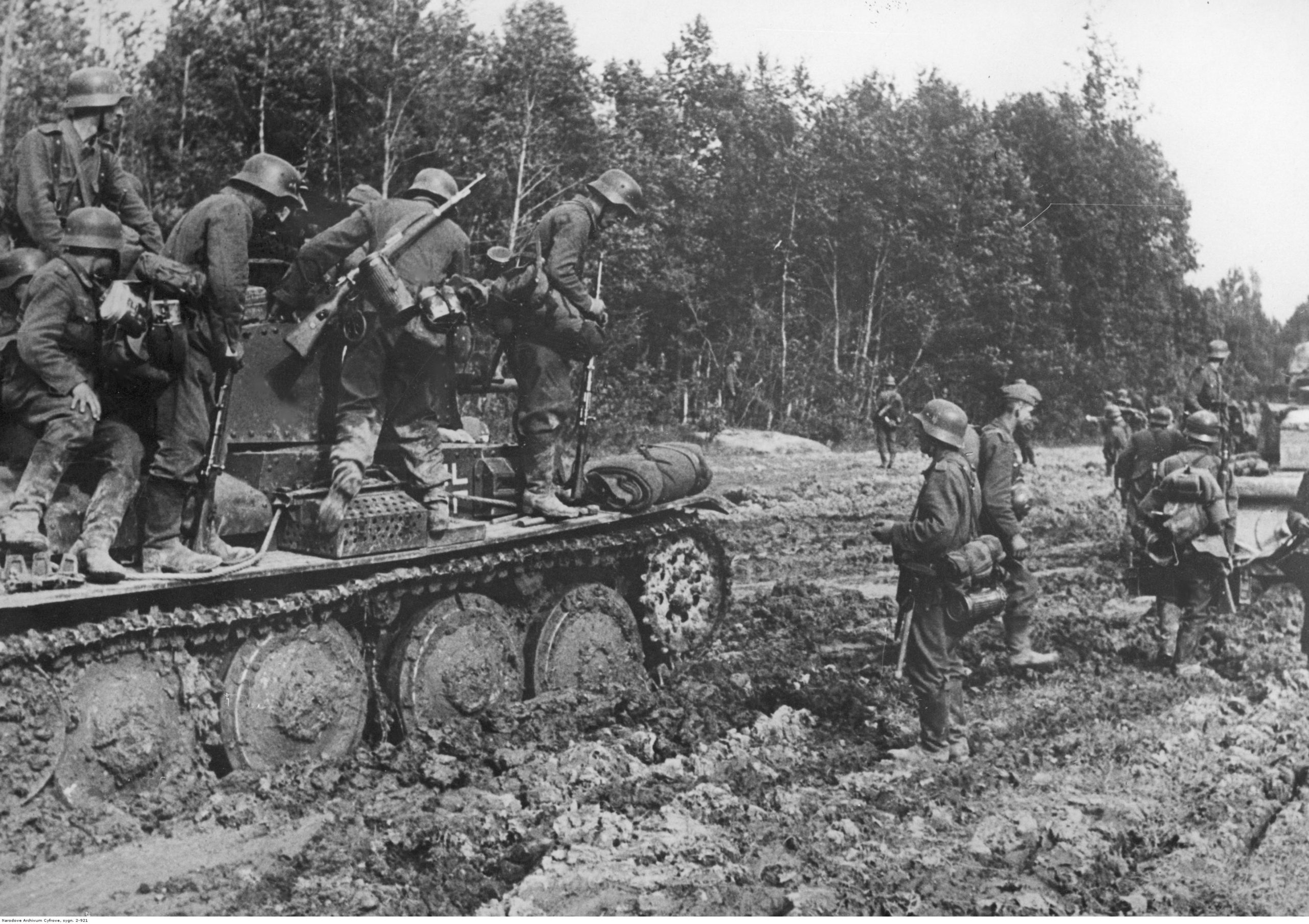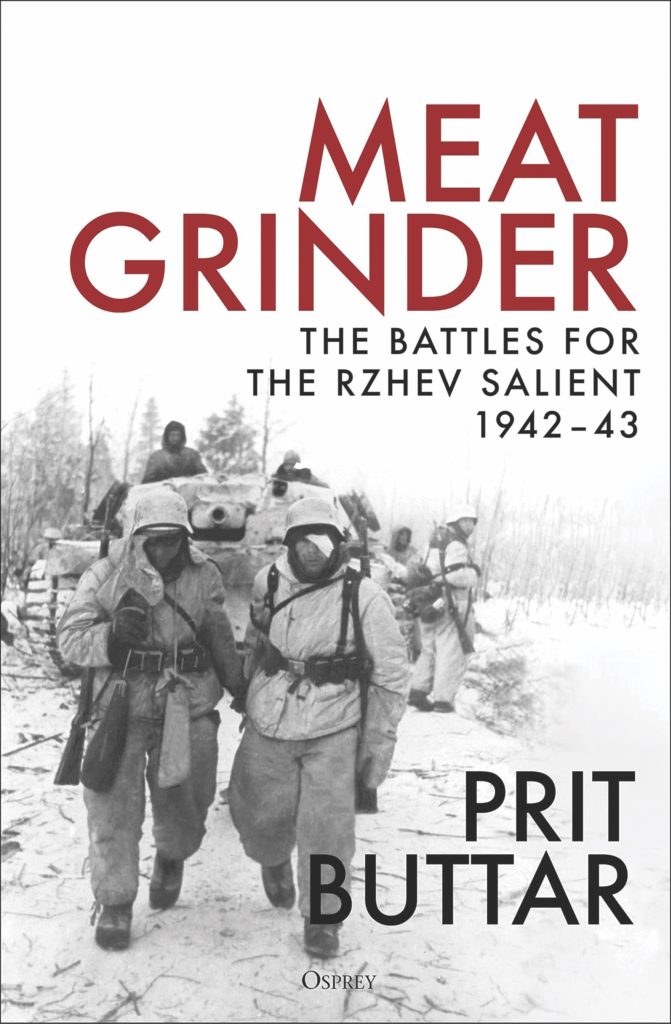Military historian Prit Buttar on his latest book, which recounts one of the bloodiest – and least known – battles of World War II
Subscribe to All About History now for amazing savings!
Between July and December 1942, a series of battles raged on the Eastern Front across a giant bulge in the German front line west of Moscow. The fighting would result in horrific casualties on both sides. More than half a million men were lost fighting for what would ultimately turn out to be one of the most futile causes of World War II. Here, expert Prit Buttar talks about the tragic significance of the Rzhev salient.
[Lead image credit: Wiki/Narodowe Archiwum Cyfrowe]

EXPERT BIO
Prit Buttar was educated at Oxford University and served in the British Army as a surgeon. He is the author of ten books about the Eastern Front in both World War I and World War II.
Your book is called Meat Grinder: The Battles for the Rzhev salient. Where does ‘Meat Grinder’ come from?
It was the rather grim name given to the entire theatre by the Soviet troops fighting in the Rzhev salient. They were put through the mill several times there, much like British divisions on the Somme. They came to call it the Meat Grinder because so many of their comrades perished for so little gain. The men understood the utter futility of it.
What was the background to these battles; how did the salient form?
In late 1941, the German invasion of Russia ran out of steam when its forces were about 30 kilometres short of Moscow. Soviet forces counterattacked, initially successfully, but then the Germans dug in. As the front line stabilised in early 1942, the salient was formed in the German line about 130 kilometres west of Moscow with the Soviets around its northward-projecting bulge to the east, north and west. It was seen as strategically important by both sides as a potential springboard for a renewed attack on the Russian capital, which is why it became the focus of such intense and bitter fighting.
What were the main objectives of Case Blue in 1942?
Case Blue was the name given to the German summer offensive that year. Its main aim was the Caucasus oil fields in the south. In order to facilitate this, the Germans created the deception that there would be a renewed attack on Moscow. It’s why so many Russian forces were concentrated around Rzhev.
How did the opposing military forces in the salient match up?
The German forces under General Model were all veteran divisions; they were all in well-prepared defensive positions consisting of two or three battle lines complete with interlinking communication trenches, barbed wire, minefields and anti-tank obstacles. The terrain they were in was well suited to defensive operations, too. It was densely forested, and because it was crisscrossed with rivers, very swampy in places. On top of this, the Germans were well equipped, well supplied and well led. By contrast, the force it faced, although much larger, had real problems. The Red Army at that time was going through a painful evolution. Due in part to Stalin’s prewar purges, it was having to learn how to fight and win in the most testing circumstances conceivable. In terms of its leadership, its training, its doctrine and its equipment, it had a long way to go before it would become a war-winning force.

Were there significant early skirmishes before the first battle?
In the spring of 1942, the Russian Cavalry Corps, under General Belov, broke through the German front lines but became cut off. It was reinforced by airborne troops, and Belov found himself in charge of a force of around 30,000 men, which at one point commanded an area behind German lines that was about half the size of Belgium. The Germans diverted significant forces in an attempt to eliminate them, but remarkably, Belov’s men managed to fight their way out and escaped the salient to the south.
When were the first major battles?
At the end of July, with the Russians marching south across the steppe towards Stalingrad, the Red Army, under General Zhukov, launched its first attack against the salient. Zhukov’s original intention had been to nip it off at its base, but he lacked the armour to do this. He opted for a two-pronged assault against the salient from the north and northeast. The terrain on these fronts very much favoured the Germans, and this is when the Meat Grinder really began. The Russians threw as many as half a million men against the eight to ten German divisions defending that part of the line only to suffer around 200,000 casualties without any significant gains. The Germans lost around 30,000. The fighting rolled on until September when it petered out.
Why did this first offensive fail?
There’s this account by a Russian veteran which neatly sums it up. In it, he describes how impressive the initial artillery bombardment was. How he and his comrades had then hurled themselves forward only to be pinned down by machine-gun fire. How they’d then watched as their tanks rolled through the German line and had disappeared. It illustrates pretty much everything that went wrong. The bombardment may have looked impressive, but it manifestly failed as the German defences remained largely intact. When the Russian infantry attacked, the Germans used machine-gun and mortar fire to drive them to cover. Few, if any, of the Russian tanks had radios, and because they fought ‘buttoned-up’ [with the tank commander inside rather than above the turret] coordination between armoured forces and ground troops was poor. The tanks just motored into the German rear, where without infantry support they were easily picked off.
How did the second Soviet offensive differ from the first?
The second offensive was called Operation Mars. Zhukov planned a four-pronged attack from the east, west, north and northwest. To a large extent this approach was dictated by the terrain, as there simply weren’t enough roads to allow a better concentration of effort. The attacks were launched in late November and fighting ground on throughout the winter. The attacks on the eastern and northern sides made no real progress, despite heavy losses. The one on the western side had some success, but the Germans managed to hold the shoulders of the attack. Even though the Red Army managed to break through and push a mechanised corps through the gap, it was soon cut off, suffering heavy losses trying to break out again. The attack on the northwest was the only one that resulted in any permanent gain by the Red Army.
Fighting on the four fronts was even more intense than it’d been in the summer. The Red Army suffered around 300,000 casualties, while the Germans lost maybe 35,000 men. Ultimately, it was a failure for much the same reasons the first offensive had failed, and the fact that it did tells you something about Zhukov’s character. He’d grown up in the region, so knew better than most how difficult the terrain was to fight an offensive campaign in. The two words most often used to describe him by those who knew him were ‘brutal’ and ‘stubborn’.

Despite the failure of Operation Mars, Model was ordered to withdraw his forces from the salient. Why was that?
By 1943, the whole of the southern front had been torn to pieces. German casualties were high, while its infantry had never really recovered from the first months of the eastern war. Troops were now needed for the summer offensive, particularly to reinforce the northern side of the Kursk salient. The only way that could be done was for Model to shorten his line by withdrawing his troops from the Rzhev salient. Plans were drawn up and a phased fighting withdrawal was executed over two weeks in early March. The lines of retreat were so well organised that it was carried out almost unmolested by the Red Army. Each unit knew the routes it needed to follow. Artillery shells were pre-positioned so that once guns had exhausted their supplies in one place they could be moved back and set up again where new stockpiles were waiting for them. Each unit kept in touch with those on its flanks so none were ever exposed. The Germans also destroyed anything as they went, ensuring that the Red Army inherited a wasteland.
What lessons did the Red Army learn from its experiences in the Meat Grinder?
After the German withdraw, the Russians got to inspect their positions and realised just how good they were. This made them reassess their whole approach to their god of war – artillery – and about their whole approach to bombardments and reconnaissance. The Red Army was very good at analysing its performances in battle and learning from them. Over time, it came to understand that it needed to improve its combined-arms operations, too, as well as allow their officers greater flexibility in the field.Finally, why do you think these titanic battles have been largely overlooked by history?
From the Red Army’s point of view, the battles were a failure. At best they were explained away as a necessary diversion that helped secure the victory at Stalingrad. For the most part, though, they were airbrushed out in Russia because it put the leadership in a bad light – no country is immune to controlling narratives in this way, however. I’m appalled to say that I was well into my 40s before I’d heard of the Bengal famine, not least because British histories of World War II make no mention of this largely human-made disaster. I think that if you read a history of your country and what you’re reading doesn’t sometimes make you feel uncomfortable, then what you’re reading probably isn’t history.
Meat Grinder: The Battles for the Rzhev Salient by Prit Buttar is available from Osprey Publishing from 13 October 2022
Subscribe to
All About History now for amazing savings!


